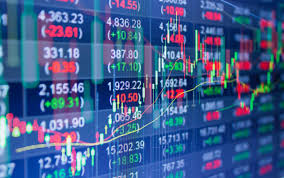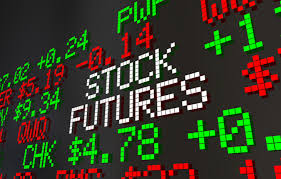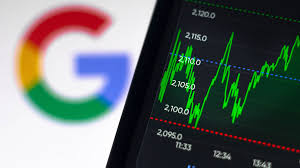Fintechzoom Stock Futures, Engaging in Fintechzoom stock futures trading can be an exciting venture for both new and experienced investors. This practice allows traders to speculate on future asset price movements, providing an opportunity to potentially profit from market fluctuations. While the prospect of significant gains might be alluring, it is crucial to understand the inherent risks and complexities involved. In this blog post, we will delve into the fundamentals of stock futures trading and highlight the strategies that can help you navigate this dynamic landscape. You can make informed decisions that align with your investment goals if you equip yourself with knowledge.
- Comprehending the fundamental principles of stock futures is crucial.
- Analyzing market trends to inform decision-making.
- There are strategies for mitigating risk in futures trading.
- We are currently evaluating the benefits and drawbacks of stock futures.
Understand the Basics of Fintechzoom Stock Futures Trading
Fintechzoom stock futures trading can seem daunting, especially if you’re just starting your investment journey. It combines the excitement of predicting market movements with the intricate mechanics of contracts. To navigate this complex landscape, one must understand the essentials behind it.
What are stock futures?
Stock futures, in simple terms, are contracts that allow investors to buy or sell a specific quantity of stocks at a predetermined price on a set future date. While the mechanics might appear straightforward, the implications and strategies can be quite intricate. This is where many beginners find themselves feeling overwhelmed.
Key Components of Stock Futures
- Contract Specification: Each futures contract has defined terms, including the underlying asset, contract size, and expiration date. These details determine how you trade and manage risk.
- Leverage: Futures trading often involves using margin, which means you can control a larger position with a smaller amount of capital. While this can amplify profits, it also heightens the risk. It’s a double-edged sword that requires careful consideration.
- Expiration and Settlement: Futures contracts have expiration dates. Once the contract reaches its expiration date, it can either settle in cash or through the physical delivery of the asset. Understanding this mechanism is vital to avoiding unwanted obligations.
Why trade futures?
One might ask, “Why not just trade stocks directly?” This is a common query among new investors. While both methods have their merits, futures trading offers distinct advantages. For example, its short-selling capacity allows for potential profit in both rising and falling markets. Additionally, the leverage factor can lead to substantial returns if managed correctly.
Common Misconceptions
Despite its advantages, people often misunderstand futures trading. Many believe it’s only for seasoned traders, or that it’s a shortcut to wealth. However, it requires a sound understanding of market trends, risk management, and timing. The buzz around rapid success stories can create unrealistic expectations.
Conclusion
In summary, stock futures trading presents both opportunities and challenges. Getting a grip on its basics is essential for any aspiring trader. As you venture into this arena, remember to educate yourself continually and approach each trade with a well-thought-out strategy. With dedication and the right mindset, you can navigate the intricate world of stock futures.
html
The benefits of trading stock futures
Trading stock futures can be a thrilling journey, full of both potential rewards and inherent risks. Engaging in this market offers several advantages that can significantly enhance an investor’s portfolio. Understanding these benefits is crucial for anyone considering venturing into this arena. Whether you are a seasoned investor or a novice, exploring the advantages can illuminate your path forward.
Leverage: A Double-Edged Sword
One of the most appealing aspects of trading stock futures is the concept of leverage. This means that traders can control a larger position with a smaller amount of capital. For instance, by using a margin, investors can amplify their potential gains. However, it is important to note that while leverage can enhance profits, it can also magnify losses, making careful risk management essential. Thus, aspiring traders should approach leverage with both enthusiasm and caution.
Trading Strategies are flexible.
Another significant advantage is the flexibility that trading stock futures provide. Unlike traditional stock trading, which relies heavily on long-term investments, futures allow for various strategies. Traders can engage in short-term speculation, hedge against potential market downturns, or even employ mixed strategies. This versatility means that investors can adapt their approaches based on market conditions, changing their tactics in real time.
Access to a variety of markets
Moreover, trading stock futures grants access to a plethora of markets that might not be otherwise available. Investors can trade futures on various indices, commodities, and currencies, opening new doors for diversification. This accessibility can hedge against risks in other areas of investment, allowing a more balanced portfolio. Not only does this broaden an investor’s horizons, but it also nurtures a richer understanding of market dynamics.
Liquidity is always a plus.
Liquidity is yet another cornerstone of futures trading. The futures market typically enjoys high levels of liquidity, making it easier for traders to enter and exit positions with minimal price slippage. Having access to liquid markets can significantly reduce trading costs and allow for more strategic decision-making as a trader. Nevertheless, it’s essential to remain vigilant, as market conditions can change.
Conclusion: Know What You’re Getting Into
Despite the numerous advantages, one must approach stock futures trading with a clear understanding of the potential downsides. As tempting as these opportunities may seem, the risks involved necessitate thorough research and strategy development. Therefore, embracing a disciplined and informed approach is key to success. In the ever-evolving world of finance, knowledge is, without a doubt, power.
This written piece avoids robotic expressions and employs a more human-like tone while addressing the complexities of stock futures trading.
There are key strategies for successful stock futures trading.
Engaging in stock futures trading can often feel daunting. The complexity of the market and the myriad of strategies can lead to confusion, especially for newcomers. However, traders can navigate this intricate landscape more easily if they understand some core principles. Let’s explore a few key strategies that can significantly enhance your trading experience and, potentially, your profits.
Understand the market dynamics.
Before diving into trading, it is essential to grasp the fundamental principles of the stock market. Knowledge of how different stocks behave, market trends and economic indicators can shape your trading decisions. For instance, news releases can heavily influence market movements. A well-timed trade, informed by current events, can make all the difference. However, recognize that market sentiment can be unpredictable and can swing dramatically based on external factors.
Develop a trading plan.
A comprehensive trading plan serves as your roadmap. It outlines your goals, risk tolerance, and the specific strategies you intend to employ. Yet, many traders overlook this vital step. They trade on impulse, which often leads to losses. Therefore, by creating a disciplined approach and sticking to your plan, you will cultivate a sense of structure in your trades. Make adjustments only when necessary, but do so based on analysis rather than emotion.
Risk management is crucial.
In the world of trading, risk is omnipresent. Therefore, understanding how to manage that risk is paramount. One effective method is to set stop-loss orders. These trade parameters let you avoid losing more than you can afford. By implementing this strategy, you give yourself breathing room, allowing for market fluctuations without devastating losses.
Continuous learning and adaptation
The stock market is always ebbing and flowing, and being static in your knowledge can be detrimental. Continuously educate yourself on market trends and trading techniques. By doing so, you remain adaptable. What worked last month may not work this month. Thus, while it’s important to have a strategy, be prepared to revise it. The market rewards flexibility and punishes rigidity.
You may also consider networking with other traders. Engaging in discussions can provide fresh perspectives and insights. Finding a community can be invaluable, as shared experiences often yield beneficial advice. However, keep in mind that opinions differ from one another. Avoid becoming overwhelmed by the sheer volume of conflicting information. Instead, filter through your insights to find what resonates with your personal trading philosophy.
Utilize advanced tools and techniques.
Today’s technology offers numerous tools that can aid in your trading approach. From sophisticated charting software to algorithm-driven trading systems, these tools can enhance your decision-making process. However, don’t rely solely on them without understanding the underlying principles. Technology should complement your skills, not replace them. Ensure that you have a solid grasp of the basics before venturing into advanced tools.
In Conclusion
In summary, stock futures trading can be a rewarding venture if approached with care and strategy. By understanding the market dynamics, developing a solid trading plan, managing your risks, and continuously learning, you can navigate this landscape with confidence. Keep in mind, that a trader’s journey is characterized by both successes and setbacks. Embrace the learning process and keep your focus on constant improvement. With dedication and practice, your journey in stock futures trading will undoubtedly lead to growth and success.
Risk Management Techniques in Stock Futures
Engaging in stock futures trading can be both exhilarating and daunting. The thrill of potential profit often dances tantalizingly close, but lurking beneath the surface is a complex web of risks. Therefore, identifying and implementing effective risk management techniques becomes paramount for anyone venturing into this arena. Understanding these methods not only helps protect your investment but also enhances your decision-making process.
1. Diversification
Diversification is a fundamental principle in risk management. By spreading investments across various assets, traders can mitigate the impact of poor performance in any single stock. However, having multiple stocks is not enough; it’s crucial to ensure their lack of correlation. When one sector suffers, another might thrive, balancing your portfolio’s overall performance.
2. Stop-Loss Orders
Implementing stop-loss orders is another prudent technique. A stop-loss order allows traders to set a predetermined price at which a position will close, thereby limiting potential losses. Yet there’s a delicate balance here. Setting the stop-loss too close might trigger a sale during normal market fluctuations while setting it too far away can lead to substantial losses. This creates a dilemma—how do you find the sweet spot?
3. Position Sizing
Often overlooked, the concept of position sizing holds critical importance. It entails deciding how much capital to allocate to each trade based on your total account size and risk tolerance. For instance, many traders adhere to the 1% rule: they never risk more than 1% of their total capital on a single trade. However, applying this rule consistently can be more challenging than it seems. Market conditions, trader psychology, and personal circumstances all come into play.
4. Consistently reviewing strategies
Risk management isn’t a one-time checklist but rather an ongoing process. Regularly reviewing and adjusting your strategies is vital. As markets evolve, so too should your approach to risk. Yet, this can lead to confusion. If you change your strategy too frequently, you might lose sight of what works. Therefore, keeping detailed records of your trades and their outcomes can help discern patterns and inform future decisions.
5. Utilizing Hedging Strategies
Lastly, hedging presents a more advanced method to offset potential losses. By using derivatives like options or futures contracts, traders can protect against adverse price movements. Hedging, however, has its complexities. It requires a solid understanding of market mechanics and can be costly if not managed effectively. Knowing when and how to hedge without overcomplicating your strategy is a skill many traders strive to master.
In conclusion, mastering risk management techniques in stock futures is no small feat. Each method has its intricacies that can be both beneficial and perplexing. By employing a combination of diversification, stop-loss orders, careful position sizing, regular strategy reviews, and hedging, traders can build a robust framework to navigate the turbulent waters of stock futures trading. The journey may be fraught with uncertainties, but with a well-honed risk management strategy, one can face the markets with greater confidence.
Technical Analysis for Stock Futures Traders
In the fast-paced world of stock futures trading, technical analysis plays a crucial role in helping traders make informed decisions. Technical analysis offers a structure for studying and comprehending market behavior. However, this analytical method can intimidate beginners. So, how do you navigate the complexities of technical analysis effectively?
Understanding the basics
At its core, technical analysis relies on the study of historical price movements and trading volumes to forecast future price actions. Traders employ various indicators and chart patterns to determine potential entry and exit points. Always remember that not all indicators work for all traders. This brings us to the importance of individual trading styles.
For instance, some traders might prefer a short-term approach, utilizing minute-by-minute price fluctuations. Others may adopt a long-term view, trading based on daily or weekly charts. This distinction shapes the way each trader interprets data and reacts to market changes. Consequently, confusion might arise when a trader attempts to apply strategies unsuitable for their trading horizon.
The Role of Indicators
Indicators such as moving averages, the Relative Strength Index (RSI), and Bollinger Bands offer insights into market trends. However, relying solely on these metrics can lead to misinterpretation if not applied thoughtfully. For example, using a moving average crossover strategy might yield profitable results in a trending market, but it can result in whipsaws in a sideways market. Traders must adjust their approaches based on prevailing market conditions.
Furthermore, blending different indicators often helps to confirm signals and reduce false alerts. Yet, here lies another conundrum: too many indicators can lead to analysis paralysis. Balancing simplicity and thoroughness is key. In this context, adopting a clear and concise strategy becomes imperative. It’s not only about what you analyze but also how you synthesize that analysis into actionable insights.
Embracing Plateaus
As you dive deeper into the realms of technical analysis, you may encounter plateaus. These moments can be frustrating but are also crucial for growth. Understanding that performance dips are part of the journey helps you remain resilient. Reflecting on past trades, identifying patterns, and adapting your strategy can transform these plateaus into stepping stones for improvement.
Furthermore, continual learning is essential. Markets are dynamic, and what works today might not suffice tomorrow. Engaging with educational resources, trading communities, and forums can provide fresh perspectives and innovative strategies. This engagement not only broadens your knowledge but also fosters a sense of connection within the trading community.
Final Thoughts
While technical analysis can initially seem like an intricate puzzle, breaking it down into manageable components can make it accessible. Remember that each trader’s journey is unique. Thus, embracing your style and preferences will lead to more refined and personalized strategies. In conclusion, the art of technical analysis invites you to explore, adapt, and thrive in the ever-evolving landscape of stock futures trading.
The role of market psychology in futures trading is significant.
Market psychology is a fascinating yet intricate element in the world of futures trading. It isn’t merely about numbers, charts, and technical analysis; it delves into the emotions and sentiments of market participants. The psychological factors at play can significantly impact trading decisions, often leading to unpredictable shifts in market behavior. Understanding this can provide traders with a noticeable edge.
Understanding fear and greed
Fear and greed serve as the primary drivers of market psychology. Most traders usually experience a mix of these emotions. Greed often propels individuals to chase after profits, leading to over-leveraging and, at times, irrational decision-making. On the other hand, fear can cause traders to exit positions prematurely or avoid taking necessary risks.
When the market rises, greed tends to overshadow logic. Traders might overlook fundamental analyses, convinced that the upward trend is unending. In contrast, during downturns, a wave of panic can ensue. Suddenly, rational thinking gives way to emotional responses, resulting in hasty sell-offs. To navigate these emotional tides, futures traders must cultivate self-awareness and emotional discipline.
The Impact of Collective Sentiment
The influence of collective sentiment adds another layer to the psychological aspect of futures trading. Market sentiment can often act like a contagion. When a majority of traders feel bullish, that sentiment can drive prices higher, regardless of underlying fundamentals. This creates an environment where the *fear of missing out* (FOMO) can take hold, leading to an unsustainable rise in prices. Conversely, widespread negativity can cause a market to fall far below its intrinsic value.
Moreover, news, social media, and trader forums can amplify these sentiments. Information constantly bombards traders, distorting their perception of reality. Sound bites can evoke strong reactions, swaying traders to act impulsively. Therefore, staying grounded amidst the noise becomes essential. Many traders struggle to maintain a balance between staying informed and not being overly influenced by external opinions.
Developing a Trading Strategy that Respects Psychology
To tailor a futures trading strategy that accounts for market psychology, it’s crucial to focus on the interplay between technical analysis and emotional intelligence. A well-rounded approach should embrace solid research while recognizing the human element. Traders can benefit significantly from setting predefined rules that dictate entries and exits, yet simultaneously remain flexible enough to adapt to changing market sentiment.
Back-testing strategies can help traders understand past market behaviors and foresee potential emotional responses. This analysis is invaluable. It allows traders to develop plans based on historical patterns rather than purely on reactions to news or price movements. By conditioning themselves to follow a disciplined approach, traders may mitigate the emotional rollercoaster that futures trading often induces.
In Conclusion
In the realm of futures trading, understanding the psychological components at play is as important as mastering technical analysis. The emotions of fear and greed can lead to significant shifts in market behavior. Collective sentiment can drive prices beyond logical limits, creating both opportunities and risks. Ultimately, successful traders will be those who acknowledge the interplay of human emotions and market dynamics, crafting strategies that harmonize the analytical with the psychological. In this complex trading environment, cultivating emotional intelligence must not be an afterthought, but rather a fundamental component of one’s trading artillery.
How to Select Suitable Stock Futures Contracts
Navigating the labyrinth of stock futures contracts can feel daunting, especially for those who are eager to dive into the world of trading. However, understanding a few key principles can significantly ease this process. In this article, I’ll break down essential considerations that you should keep in mind when selecting stock futures contracts, providing a framework to make informed decisions.
Understand your investment goals.
Before anything else, clarify your investment objectives. Are you looking to hedge against potential losses in your portfolio or seeking speculative opportunities? This defines your approach. For instance, it may be wise to purchase futures to offset holdings in a particular stock if your primary focus is risk management. Conversely, if you’re aiming for high returns, you might prefer contracts tied to more volatile stocks.
Research the underlying asset
Grasping the characteristics of the underlying stock is crucial. Different stocks react distinctly to market conditions, economic news, and other influencing factors. Perform diligent research and analyze historical performance. Look for stocks with a strong track record of stability, but don’t disregard those with high volatility. Such stocks can yield lucrative opportunities, but they can also come with pronounced risks.
Consider market conditions.
Being aware of the broader market landscape is essential. Markets are inherently cyclical; therefore, they can impact stock futures in unexpected ways. If the market is trending upward, some stocks may surge, making their futures contracts more attractive. Yet, in a bearish market, certain futures may become risky. Staying updated on economic indicators and trends can lead to astute investment choices.
Evaluate the contract specifications.
Each futures contract comes with its specifications, which include contract size, tick value, expiration dates, and settlement procedures. These elements can deeply influence your strategy. For example:
- Contract Size: This indicates the amount of the underlying asset you’re controlling. Smaller contract sizes may allow for more flexibility and reduced risk.
- Expiration Date: Futures contracts are time-sensitive. The closer you get to the expiration date, the more volatile the price can become. Timing is crucial in your decision-making.
- Settlement Procedure: Understanding whether you’re dealing with a cash settlement or physical delivery is also important, as this can affect your liquidity.
Assess Liquidity
The ease with which one can buy or sell a futures contract without impacting its price is known as liquidity. Contracts with higher liquidity typically mean tighter bid-ask spreads, reducing your transaction costs. Assess the volume of trading in the contracts you’re considering. A lack of liquidity can lead to significant slippage, which may erode potential profits.
Utilize risk management tools.
Finally, employ risk management techniques, such as stop-loss orders. These tools can help safeguard your investments and mitigate potential downsides. Additionally, managing your position size relative to your total portfolio is essential. Don’t risk more than you can afford to lose; this remains a fundamental rule in investing.
In conclusion, choosing the right stock futures contracts necessitates a blend of research, strategic thinking, and an understanding of your financial landscape. While it may require some effort, the rewards often justify the investment of time and energy. Engage with the dynamics of the stock market, keep learning, and remain adaptable in your approach.
Trading Stock Futures: A Comparative Analysis with Traditional Stocks
In the vast universe of financial markets, investors often find themselves navigating through a maze of options. Among these, stock futures and traditional stocks stand out as two prominent avenues for potential wealth accumulation. Each has its own set of advantages and pitfalls, making the comparison not just relevant but crucial for anyone looking to make informed investment decisions.
Understanding the basics
At its core, trading stock futures involves agreements to buy or sell a stock at a predetermined price on a specified date. It might sound straightforward, but the implications of futures trading extend far beyond simple transactions. Traditional stocks, on the other hand, represent ownership in a company and typically yield dividends when it performs well. Herein lies one significant distinction: while owning stocks often gives you a claim on a company’s profits, stock futures offer a more speculative approach, hinging on the fluctuations of future market conditions.
Leverage and risk.
Leverage is one of the most compelling aspects of trading stock futures. Futures contracts allow traders to control a substantial amount of stock with a relatively small investment. This can amplify profits significantly, but therein lies the paradox—greater potential returns come with heightened risk. It’s crucial to understand that while you can reap benefits from price movements, you can also suffer enormous losses if the market doesn’t move in your favor.
In contrast, traditional stock investments proceed at a steadier pace. Investors tend to buy and hold stocks over time, which can soften the impact of market volatility. This long-term strategy often leads to accumulated value and dividends, yet it lacks the adrenaline rush that comes with short-term trading in stock futures. Nevertheless, the security of stocks may be appealing to those who prefer a less tumultuous investment experience.
Market Sentiment and Timing
In the world of stock futures, timing is often everything. Traders must stay attuned to market sentiment, economic indicators, and company news, all of which can result in rapid price changes. The ability to react swiftly can make a significant difference. However, this swift decision-making can lead to hasty investments, sometimes resulting in regret. If you’re not careful, the excitement can cloud judgment.
Conversely, with traditional stocks, while timing still plays a role, there is a more forgiving nature. Investors can take their time conducting research and analyzing trends before making a purchase. This laid-back approach fosters patience, although the risk of missing out on opportunities does increase as prices rise.
Conclusion: Navigating the Choice
Ultimately, the choice between trading stock futures and traditional stocks hinges on individual investment goals and risk appetite. For those who thrive on volatility and are willing to accept the pitfalls, stock futures might represent a thrilling avenue for potential gains. However, for the more risk-averse, a stable yet rewarding approach through traditional stocks can lead to financial security over time.
Thus, it’s vital to evaluate your financial situation and consider how much risk you’re willing to embrace. Remember, every investment journey is unique, and finding the right path often means striking a balance between desire and reality.
The influence of economic indicators on stock futures is significant.
Understanding the intricate relationship between economic indicators and stock futures is essential for investors navigating today’s turbulent financial landscape. Economic indicators serve as pivotal signals that provide insights into the health of economies, thus impacting stock market performance. However, it can sometimes feel like deciphering a complex puzzle. For instance, while some may argue that employment rates hold the most weight, others might assert that inflation is the true game-changer. This creates an appealing yet bewildering world for traders and analysts alike.
What are economic indicators?
At their core, economic indicators are statistics that reflect the overall performance of an economy. We can broadly categorize them into three types: leading, lagging, and coincident indicators. Leading indicators, such as consumer confidence or stock market performance, tend to predict future economic activity. Conversely, lagging indicators, like unemployment rates, confirm trends after they have already occurred. Coincident indicators, meanwhile, operate concurrently with the economy’s movement.
Yet, it’s fascinating to consider how these indicators can diverge in significance across different contexts. For instance, in a rapidly growing economy, certain indicators may signal an impending downturn, while in a sluggish market, they could indicate a potential recovery. This multifaceted nature of economic indicators adds a layer of complexity, as investors must continually assess the relative importance of each signal.
The role of inflation and interest rates is significant.
Investment circles frequently discuss inflation and interest rates. When inflation rises, purchasing power decreases, which can lead to a decline in consumer spending. This scenario can trigger a ripple effect in stock futures. Specifically, high inflation may compel central banks to raise interest rates. Consequently, borrowing costs increase, thereby reducing companies’ profitability and adversely affecting their stock prices.
Yet the relationship between these indicators isn’t always straightforward. Consider a scenario where a spike in inflation coincides with robust wage growth. In this situation, consumers might be able to maintain their spending levels, thereby cushioning the impact on stock futures. Consequently, the interpretation of these indicators requires careful analysis and consideration of the broader economic landscape.
Investing in Economic Indicators
For those willing to navigate this intricate web of economic data, comprehension translates into opportunity. Market participants can leverage economic announcements to make informed projections about stock futures. A positive jobs report, for example, often leads to bullish sentiment in the market, while poor GDP figures can quickly dampen investor enthusiasm.
However, while this approach might seem logical, it is not without its pitfalls. Misinterpretations often arise when investors react impulsively to short-term data releases. The key lesson here is the importance of context. One must consider not only the indicators themselves but also the prevailing economic sentiment and underlying trends.

Conclusion
In conclusion, the impact of economic indicators on stock futures is both profound and complex. Investors must embrace this complexity to develop a nuanced understanding of market dynamics. By considering the interplay of various economic signals, one can make more informed investment decisions. Yet, it’s crucial to remain vigilant, as the landscape is ever-changing. Relying solely on economic indicators might lead to oversimplification. The market thrives on uncertainty, and successful investors recognize that adapting to these complexities is part of the game.
Ultimately, the unpredictability of economic indicators presents both challenges and opportunities. The key lies in continuous learning and remaining open to diverse perspectives. In this intricate dance of data, familiarity paired with a keen sense of intuition can serve as invaluable assets for any investor.
html
Future Trends in Fintechzoom Stock Futures Trading: What Should We Expect?
As we venture deeper into the 21st century, the landscape of stock futures trading is evolving at an unprecedented pace. Not only are we witnessing rapid technological advancements, but also shifts in market behavior influenced by global events. To navigate this complex terrain, it’s essential to grasp some prevailing trends that will likely define the future of this sector.
1. Increased Use of Artificial Intelligence
Stock futures trading is about to undergo a revolution thanks to artificial intelligence (AI). By analyzing vast amounts of data, AI can uncover patterns that are often imperceptible to the human eye. Moreover, AI-driven algorithms can execute trades at lightning speed, making decisions based on real-time data. This reduces the potential for human error but raises questions about market fairness and the implications of automated trading. How will retail traders keep pace with such technology?
2. Rise of Retail Investors
The democratization of trading platforms has empowered retail investors like never before. With simple access to information and user-friendly tools, more individuals are participating in stock futures trading. This influx of retail investors might lead to increased market volatility, but it also opens the door for diverse trading strategies beyond mere speculation.
3. Regulatory changes
Governments and regulatory bodies are keenly aware of the changes occurring within the financial markets. As a result, we can expect new regulations to emerge, aiming to ensure transparency and protect investors. These regulations may impose restrictions on certain trading practices as authorities attempt to mitigate systemic risks. Consequently, traders will need to stay informed and adaptive to maintain a competitive edge.
- Market Volatility: The future will likely witness increased fluctuations in stock prices, driven by a combination of economic uncertainties and external factors like geopolitical events.
- Environmental, Social, and Governance (ESG) Factors: Investors are increasingly considering ESG criteria in their trading decisions. Companies that adhere to these principles may attract more investors, influencing stock prices.
- The introduction of blockchain technology may improve trading efficiency and security. It promises to streamline processes, reduce fraud, and increase transparency in stock futures trading.
In conclusion, the future of stock futures trading promises a blend of excitement and uncertainty. As we adapt to these changes, it is crucial to embrace the learning curve while remaining vigilant. The convergence of technology, regulation, and market dynamics will undoubtedly shape the trading strategies of tomorrow. Ultimately, staying informed and adaptable will be key to thriving in this ever-evolving landscape.

Frequently Asked Questions
What are stock futures?
Stock futures are financial contracts that obligate the buyer to purchase and the seller to sell a specific quantity of stock at a predetermined price on a future date.
How do stock futures work?
Stock futures allow traders to speculate on a stock’s future price movements. If the price rises, buyers can profit; if it falls, sellers can benefit.
What is the difference between stock futures and stock options?
The main difference is that stock futures obligate the buyer to purchase the stock at the agreed-upon price, while stock options give the buyer the right, but not the obligation, to buy or sell the stock.
Why do investors trade Fintechzoom Stock Futures?
Investors use stock futures to hedge their positions, speculate on future price movements, and increase leverage in their trading.
What are the risks associated with trading fintechzoom Stock futures?
The risks include high volatility, the potential for significant losses, and the obligation to fulfill the contract terms, which can lead to margin calls.
How can one use stock futures for hedging?
Investors can use stock futures to hedge against potential declines in the value of stocks they own by taking an opposing position in the futures market.
In stock futures trading, what is a margin?
In stock futures trading, a margin refers to the percentage of the total contract value required as collateral to enter into futures contracts.
Is it possible to trade stock futures on weekends?
While some platforms may offer limited trading hours outside regular market hours, stock futures are typically not tradeable on weekends.
What factors influence stock futures prices?
Factors influencing stock futures prices include economic indicators, earnings reports, geopolitical events, and overall market sentiment.
How do I start trading stock futures?
To start trading stock futures, you need to open an account with a brokerage that offers futures trading, deposit the required margin, and conduct research to develop a trading strategy.




















Comments 2